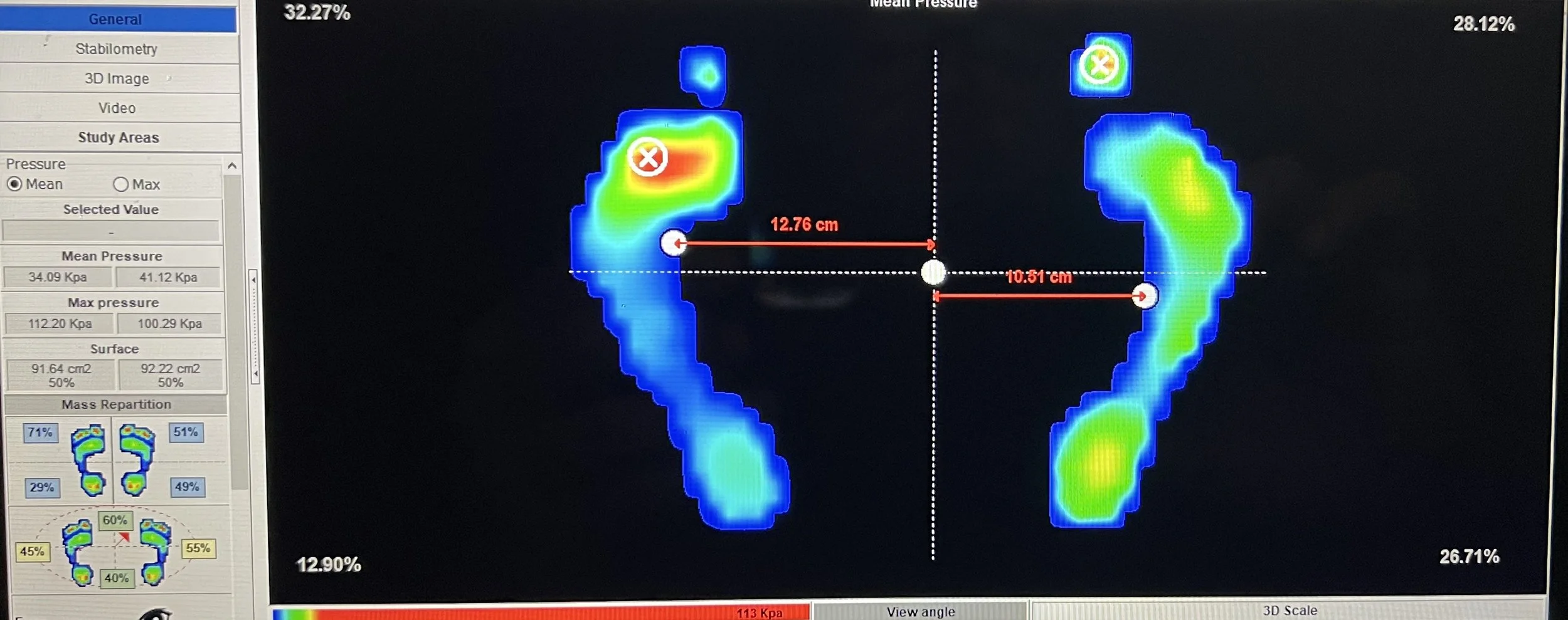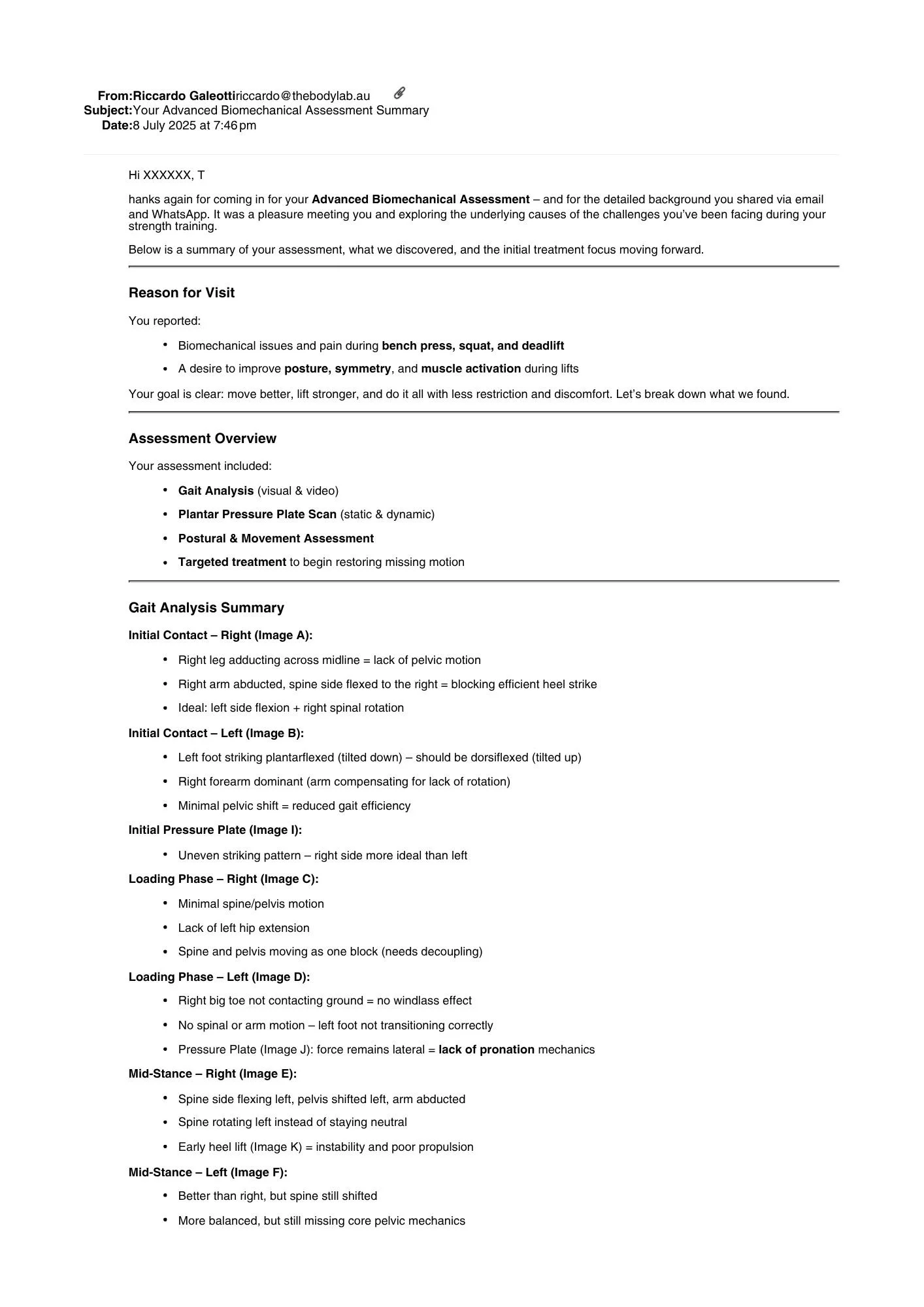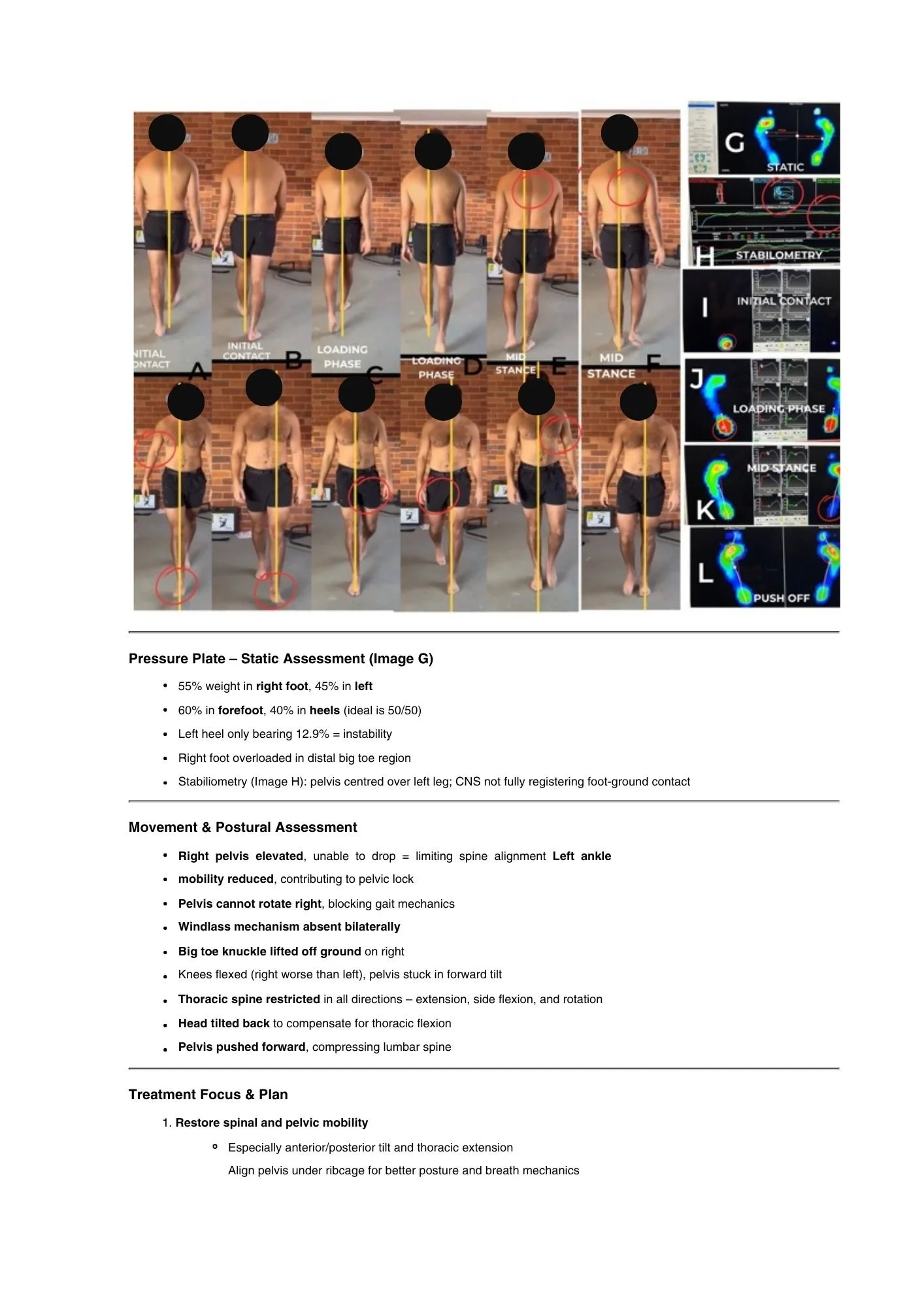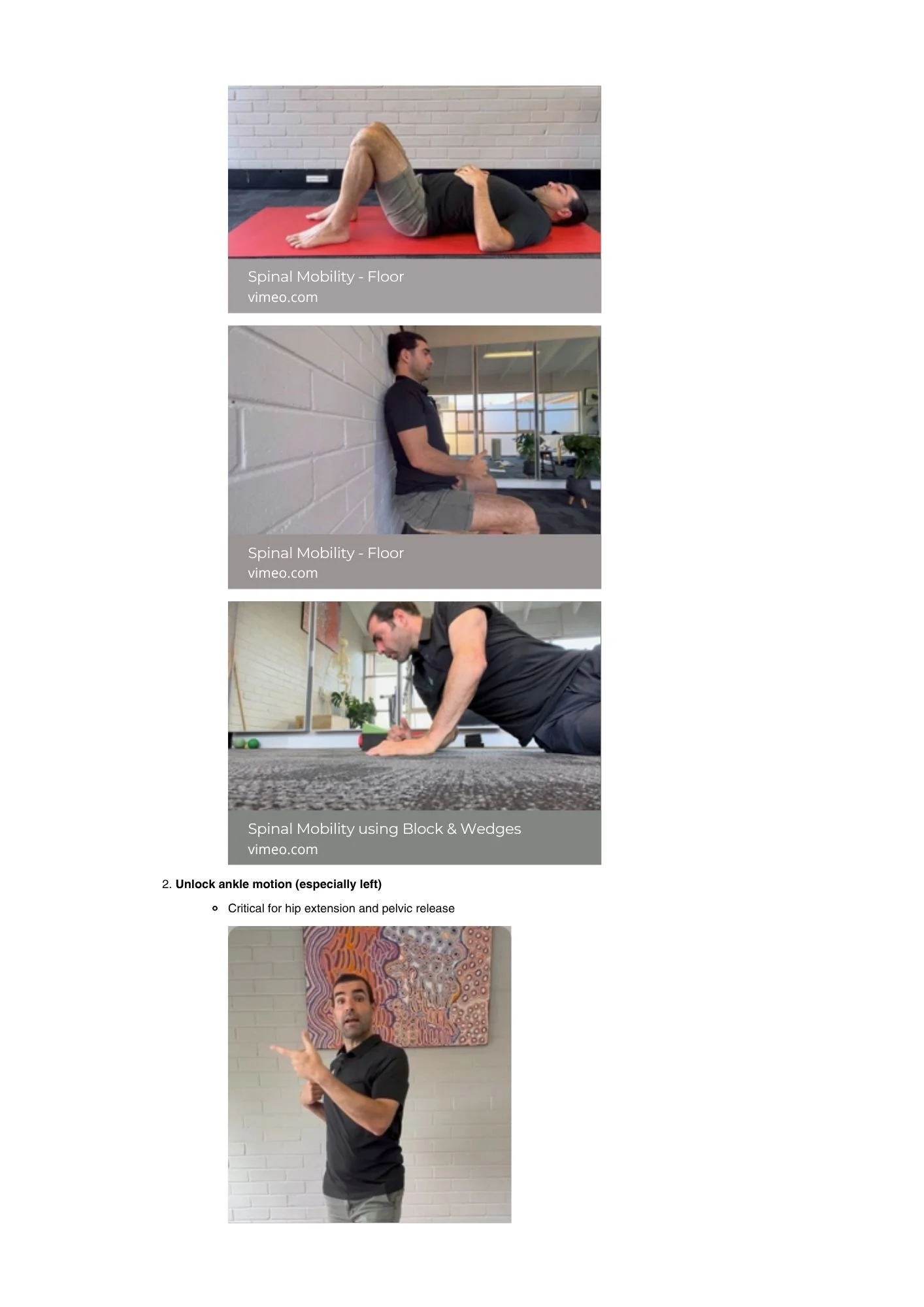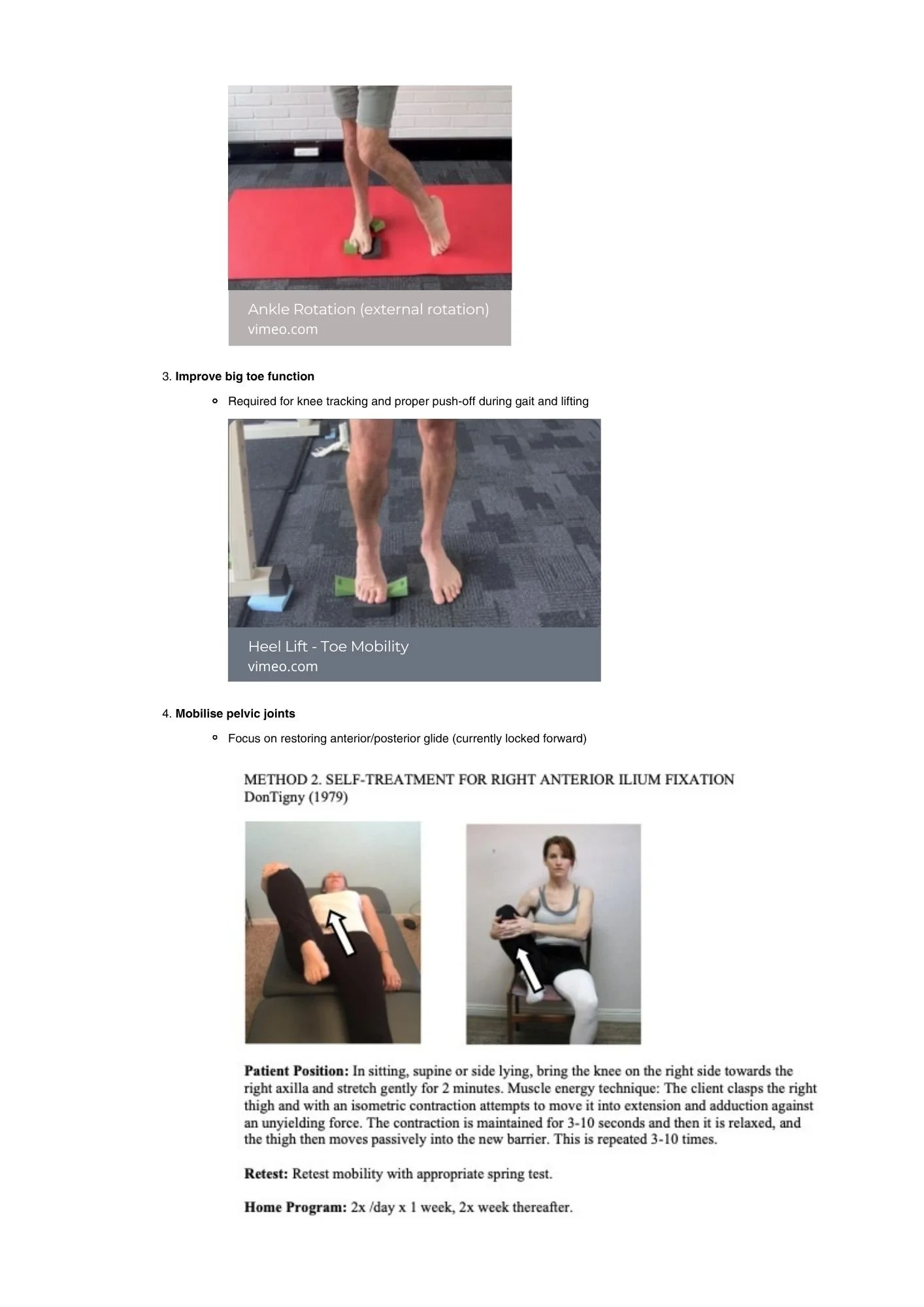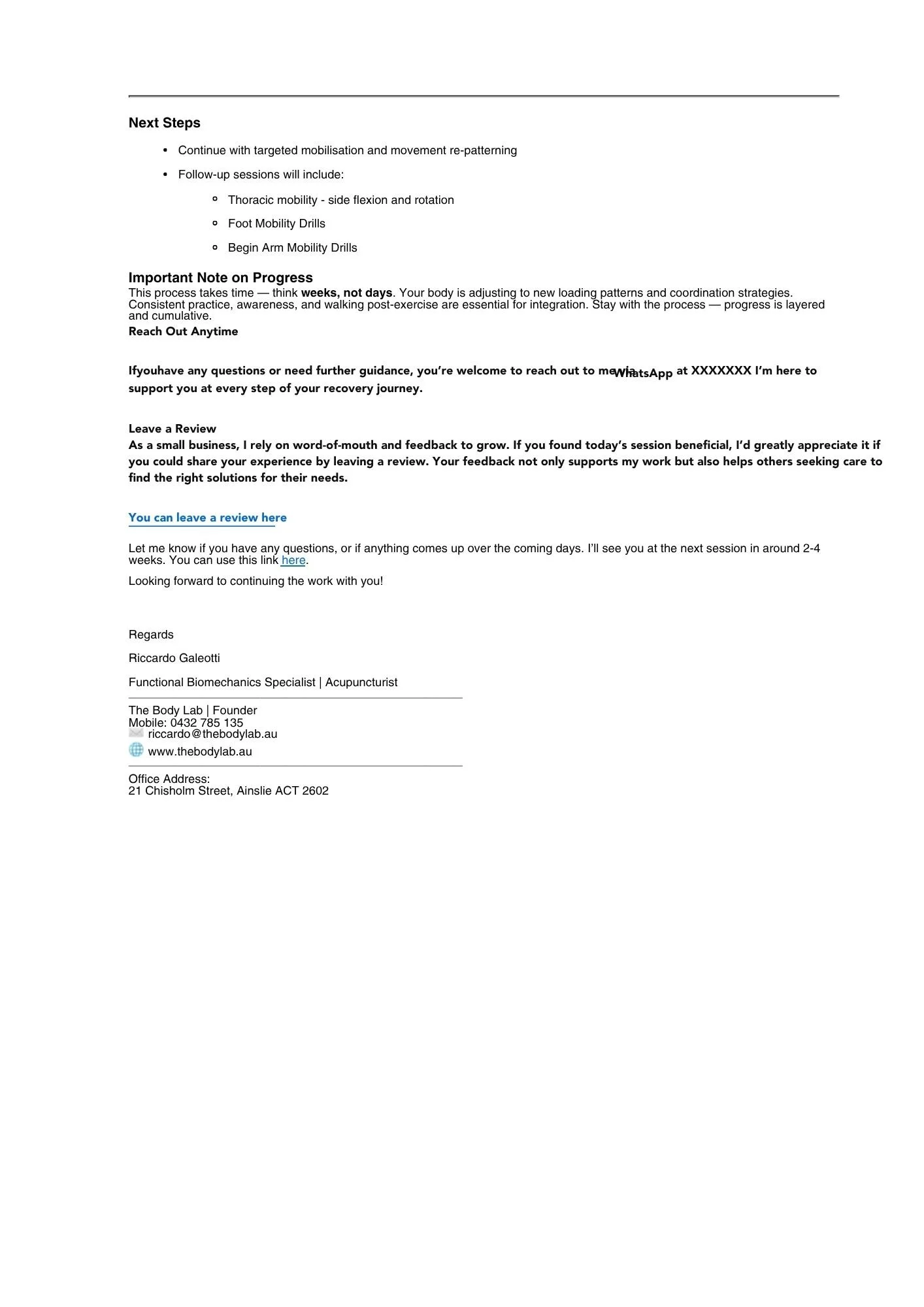“Posture, Pain and Performance: Inside a Real Biomechanical Analysis Session”
From Frustrated to Functioning: Marc’s Advanced Biomechanical Assessment
Meet Marc (name changed). A dedicated lifter in his mid-20s with a solid training history — 110kg bench, 145kg squat, 180kg deadlift — but recently sidelined by pain, instability, and postural problems that just wouldn’t quit.
The Complaint
Marc reached out after struggling with:
Shoulder pain during bench press
Back discomfort with squats and deadlifts
A sense that his posture was off — like one side of his body was dragging the other around
His goal? Get back to lifting heavy — but without the aches, asymmetries, and post-lift regret.
The Assessment Process
Marc booked in for our Advanced Biomechanical Assessment, which combines:
Visual & Video Gait Analysis
Postural Assessment
Functional Joint Movement Tests
Real-time Manual Therapy & Movement Correction
And of course — the famous Post-Session Report (because data = power).
What We Found
🦶 Gait Breakdown (how you walk)
Initial Contact – Right (Image A):
Right leg adducting across midline
No pelvic shift; spine side-flexed right
Right arm abducted — compensation pattern
Initial Contact – Left (Image B):
Left foot plantarflexed (pointing down) instead of dorsiflexed (toes up)
Right forearm dominant = lack of trunk rotation
Minimal pelvic rotation = inefficient gait
📊 Pressure Plate Findings
Image G (Static):
55% weight on right foot, 45% on left
60% forefoot dominance = heel disengagement
Left heel only bearing 12.9% — big red flag for ankle instability
Image H (Stabiliometry):
Centre of mass shifted left — CNS not registering left heel properly
Image J (Dynamic):
Right foot pushing laterally — lack of proper pronation
Postural + Functional Findings
Right pelvis elevated and locked = poor lumbar control
Thoracic spine stiff — no side-bend, no rotation, no extension
Head tilted back — compensating for thoracic flexion
Big toe off the ground = no windlass function = no propulsion
Knees in chronic flexion, pelvis tilted forward
How I approached this differently than most therapists:
Instead of treating one area in isolation (like releasing tight quads or adjusting posture with static exercises), I looked at how Marc's joints moved together during dynamic tasks — especially gait and standing transitions. This isn’t about forcing posture or “activating” isolated muscles — it’s about restoring joint relationships and movement sequencingacross the whole body.
I used real-time gait analysis to understand what his spine and pelvis were doing in space. Most therapists don’t assess the timing of movement — I do.
I didn’t cue Marc to “stand tall” — I worked to reintroduce extension and side-bending through thoracic mobility drills, targeted breathwork, and rotational gait resets.
For his pelvis and knees, I didn’t just stretch or strengthen — I unlocked missing joint motions (anterior/posterior tilt, hip glide) and showed him how to integrate them into walking and lifting.
For the big toe, I didn’t go straight to toe scrunches or towel pulls (which often make things worse). Instead, we restored windlass mechanics with midfoot wedges and toe grounding patterns linked to hip extension and propulsion.
This approach doesn’t just loosen things up — it retrains the body’s blueprint. Marc didn’t have to “fix his posture” — we changed how his posture formed in motion.
Why This Approach is Different
Most therapists tell you how to walk or move — cueing you to “engage your core,” “stand tall,” or “push through the heel.” Helpful? Sometimes. But superficial. What we did with Marc was different: we didn’t just instruct him — we changed the conditions under which his body chooses to move. Every joint we mobilised, every drill we used, subtly changed how his body sensed itself in space. That means every step he took after the session became a form of treatment.
We're not layering cues on top of dysfunction — we’re removing the blocks so movement becomes natural again. This is why change sticks. Because we work with the nervous system, not against it.
This isn’t just “walking better” — it’s restoring the software behind movement. Each step retrains the body without needing you to overthink it. That’s what makes it different — and what makes it work
What We Did
Treatment Focus (Session 1)
Mobilised thoracic spine to restore rotation & extension
Encouraged pelvic anterior/posterior tilt to unlock hip motion
Activated big toe and midfoot with functional drills
Restored ankle dorsiflexion on left side
Re-coordinated spinal motion using gait drills
Marc’s Homework
3 functional mobility drills
5-minute walk post-drill to reinforce pattern
Movement awareness tracking: pelvis, foot pressure, spinal flow
What Marc Received After His Session
Marc walked away with a comprehensive plan that included:
✅ Annotated movement report with breakdowns of each gait and postural issue (Images A–K)
✅ Static and dynamic pressure plate scan results with data interpretation
✅ Personalised movement correction plan: including drills for spine, ankle, foot, and pelvis
✅ Treatment summary: explaining what was addressed, why, and how
✅ Short- and long-term strategy: to rebuild his lifts safely and with better mechanics
✅ Integration advice: how to layer these new patterns into daily movement and gym sessions
✅ Follow-up plan: review session scheduled in 2–3 weeks to reassess, treat, and advance to phase 2
✅ WhatsApp support + check-ins as needed in between sessions
Marc didn’t just receive treatment — he got a movement education, a realignment plan, and support to keep progressing.
Email to Marc below
The Result?
Immediate change in walking pattern, foot loading, and postural alignment.
More importantly — Marc finally understood why his body was fighting him in the gym. With his pelvis, thoracic spine, and foot mechanics working together again, he had the blueprint to rebuild.
Ready to Move Like Marc?
If your lifts are stuck, your body feels misaligned, or pain keeps showing up like a bad sequel — you don’t need another foam roller.
You need a system.
👉 Book your Advanced Biomechanical Assessment at The Body Lab
📍 21 Chisholm Street, Ainslie ACT 2602 📞 0432 785 135 | ✉️ riccardo@thebodylab.au

